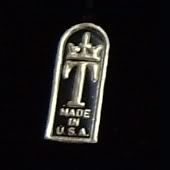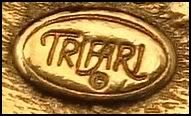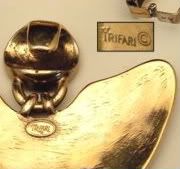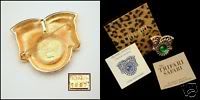I took a picture of the store front from across the street. This store is located at the corner of 6th Ave / 37th St. From this picture you can already see a huge collection of gemstones hanging on the wall. Most of the precious and semi-precious gemstone beads are in the back of the store. Some strands are marked with price tags, some aren't. The strands without price tags are priced by weight. I bought my citrine from this store. As far as the quality is concerned, they're not the AAA highest quality, but with some digging and patience, you can find some A-AA quality gemstones for a pretty good price. They do wholesale and retail. If you have your tax ID, you could get the wholesale price. I didn't have my tax ID with me at the time and they still gave me a small discount. I was happy about it.
In the middle of the store, on the display tables, there is a HUGE collection of pearls of all kind. You can also find new arrivals and discounted items there too. The staff are nice - at least they were nice to me. There was another customer in the store at the time I was shopping. This customer was bargaining with the store owner on the phone and her tone of voice didn't sound very nice. However, the staff managed to remain polite and nice so I think they did a very good job.
 Here is a picture of the citrine 10mm heart briolettes I got. Champagne yellow and orange-ish flares. The color is more intense in person. Good clarity. Good reflection of light (they really sparkle and I love using them for my jewelry). No internal fracture. Overall very good quality.
Here is a picture of the citrine 10mm heart briolettes I got. Champagne yellow and orange-ish flares. The color is more intense in person. Good clarity. Good reflection of light (they really sparkle and I love using them for my jewelry). No internal fracture. Overall very good quality.PRICE
All gemstones and pearls are sold in strands so you have to buy wholesale volumes. For the citrine that I bought, I think I got them at a good price. There is a bunch of pearls and gemstones that are on discount. I believe if you spend enough time browsing in the store, you will get something quality at good prices.
MY THOUGHTS
For gemstones, you might be able to get better prices online, but I'd rather buy from physical stores, especially after I found Suma. It's not just about touching and examining the stones in person. From my experience buying gemstones online, you pay for expensive shipping (because gemstones are heavy) and wait for a LONG time when you order directly from Indian manufacturers. International shipping takes a long time. Sometimes the gemstones may turn out to be different from your expectation. After doing that for several times, I thought it's really not worth it, especially when you're running a business and you don't want to gamble on the quality of your products. I'm glad I found this store. I'll definitely go to them when I need gemstones.












